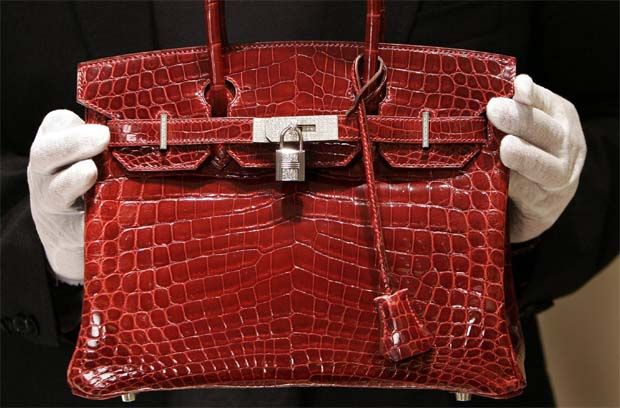`

Then there are newer and more interesting physical and luxury items that isn’t part of the financial markets which appeared to hold the value
very well. Minted limited edition Lego sets, select Hermes and Chanel handbags as well as tier-one luxury watch brands such as Patek Philippe, Audemars Piguet and Rolex are such examples.
The challenge is finding a suitable asset class that is palatable to one’s risk tolerance, investment horizon and financial capability. This is why there are many varieties of asset classes in the financial markets that serve different purposes.
`
`
IF you have savings of RM100,000 or Rm1mil, how would you utilise this amount of money to preserve your wealth?
`
`
It is a legitimate question but increasingly pressing as globally, countries around the world are facing inflationary pressure due to the effects of loose monetary policies for the past two years.
`
`
While not everyone is passionate about the financial markets or macroeconomics, most would be concern if they were to know the value of their money or hard-earned savings are increasingly eroded daily through no fault of theirs.
`
`
The common method adopted by most would be to assess how much ringgit is worth against foreign currencies like US dollar, Singapore dollar, British pound and the likes. Another would be the actual purchasing power of your money. Combining both, it becomes the formula of purchasing power parity.
`
`
I have written an article in this column last year using the Big Mac Index to illustrate inflationary effects. Today, as inflation is already here, I prefer to dwell into how individuals can protect their savings from inflation itself.
`
`
Some would argue, they live in solitary and would hardly be impacted even if the ringgit weakened substantially. However, even one who does not travel abroad and lives entirely within the domestic ecosystem cannot run away from the impact of inflation.
`
`
As the world economy is a huge interlinked web, connected via global trades, inflationary pressure can be imported through the transaction of goods or the fact that our country has foreign debts. There is no absolute way of shielding in entirety.
`
`
Ceiling price for necessities and list of controlled items are what government of the day do to ensure some level of protection for the citizens but if market forces react otherwise, government intervention in itself is not sufficient to push back. This is proven even in the strictest communist or socialist regime around the world, such as North Korea.
`
`
The only way to hedge against inflation is to engage in some form of investment. In the past, real estate has always been recognised as one of the best asset classes to preserve wealth and hedge against inflation. This ageold wisdom has survived through thousands of years and civilisations.
`
`
New asset class
`
As the society evolves and modern economy takes shape, there is now the creation of new asset class which in the past either simply do not exist or wouldn’t make sense to invest substantially. The more common form of investments are the likes of bonds, gold, fixed deposits and equities.
`
Then came mutual funds and index-linked funds. Exchange-traded funds in recent years became wildly popular, especially when active investment returns did not provide the same kind of returns it once did.
`
This gained traction for those who are mostly passive investors or do not have the time to do individual stock picking. Yet, despite all the asset classes mentioned above, these are all considered relatively acceptable to most people.
`
With the millennials and Gen-z being in the workforce, technology have taken centrestage in every part of our lives even when it comes to asset classes. Cryptocurrency, non-fungible tokens (NFTS) and digital assets have made its way into mainstream financial markets where investment banks, which traditionally scoffs at such assets, have now become a part of the frenzy.
`
`
Advocates of cryptocurrency, for instance, goes as far as calling it a hedge against inflation or hedge against “fiat currency” or the “new gold”.
`
`
Traditional asset classes highlighted above are seen as out-of-date by the new crop of investors, whoever they are and wherever they may come from. I do not wish to debate the utility and viability of cryptocurrency, NFTS or digital assets. However, the big question to me though is, what truly constitutes a hedge against inflation?
`
`
For an asset class to constitute a hedge against inflation, the more fundamental aspect is for the asset class to consistently outperform annual inflationary pressure. For example, if the inflation rate is 4% per annum over 10 years, the asset class that one invest in must outperform 4% per annum consistently across the same period.
`
`
This asset class will then effectively hedge and protect the value of your money over a substantial duration of time.
`
`
The challenge is finding a suitable asset class that is palatable to one’s risk tolerance, investment horizon and financial capability. This is why there are many varieties of asset classes in the financial markets that serve different purposes.
`
`
Bonds and gold are good for those with low-risk appetite but do not expect spectacular returns from these asset class. In fact, many have questioned whether bonds and gold can still preserve value although this has been proven in the past during wars and turbulent times.
`
Luxury items
`
`
Then there are newer and more interesting physical and luxury items that isn’t part of the financial markets which appeared to hold the value very well. Minted limited edition Lego sets, select Hermes and Chanel handbags as well as tier-one luxury watch brands such as Patek Philippe, Audemars Piguet and Rolex are such examples.
`
`
An unopened Lego set delivers an average annual return of 11%. A Hermes Birkin has seen an average annual increase in price of 14% from 1980 to 2015. This is in comparison to the returns of gold at -2.1% and S&P 500 at 11.7% over the same period.
`
`
For the Chanel Classic Medium Flap bag, the price has increased over the past 31 years, from US$1,150 (RM4,817) in 1990 to US$8,800 (RM36,858) in 2021. This gives an average annual return of 21.4% and a compound annual growth rate of 6.8% throughout the period.
`
`
If we look at watches, the retail price of stainless steel sports watches have gone crazy in recent years. A Phillipe Patek Nautilus, which retailed at US$3,100 (RM12,985) in 1976 when it was first introduced, is retailing at today US$35,000 (RM146,485)
`
`
What is more frightening is the secondary market or grey market pricing for these luxury goods due to the sheer difficulty of getting one at retail price.
`
`
A standard Hermes Birkin sized 25 retails at around US$10,000 (RM41,885) but in the secondary market, it can fetch as high as US$25,000 (RM104,713). The Patek Nautilus in a grey market commands close to US$175,000 (RM733,000). The classic Rolex Submariner date steel, which retails at US$10,800 (RM45,236), commands a huge premium in the grey market at around US$20,000 (RM83,770).
`>
`
Some may argue that these are the tactical strategy by the ultra-luxury brands to restrict supply and cause a demand shortage in order to drive up the price, making it a highly desirable product.
`
However, the counter argument is the fact that these top range luxury brands are handcrafted and requires the hours to produce the finish product. The limited resources coupled with the need to ensure quality also limits supply.
`
In the face of a rising affluent class and burgeoning upper-middle class globally, naturally these luxury brands become highly sought after. Once the second-hand market is able to preserve the value, it becomes a hedge against inflation.
`
My biggest takeaway though is not which asset class would be the best hedge against inflation. Rather, even within each asset class, it requires homework, due diligence and careful selection in terms of investment to preserve wealth. Making the right decision to purchase or invest needs time and effort
`
`
Not all that glitters are gold and in this case, selected steel watches may be worth more than a pure gold watch. So, choose the asset class that you can best understand and would be happy to hold over time in the face of inflation.
 NG ZHU HANN
Ng Zhu Hann is the author of “Once Upon A Time In Bursa”. He is a lawyer
and former chief strategist of a Fortune 500 Corp. The views expressed
here are the writer’s own.
NG ZHU HANN
Ng Zhu Hann is the author of “Once Upon A Time In Bursa”. He is a lawyer
and former chief strategist of a Fortune 500 Corp. The views expressed
here are the writer’s own.
Source link
Related
https://www.thestar.com.my/business/business-news/2022/01/22/policy-normalisation-can-lend-support-to-ringgit

https://www.thestar.com.my/business/business-news/2022/01/22/consumer-price-index-up-in-december
Related posts:














 One common parenting mistake is jumping to conclusions about your
child’s guilt without even giving them a chance to explain first. —
Positive Parenting
One common parenting mistake is jumping to conclusions about your
child’s guilt without even giving them a chance to explain first. —
Positive Parenting

